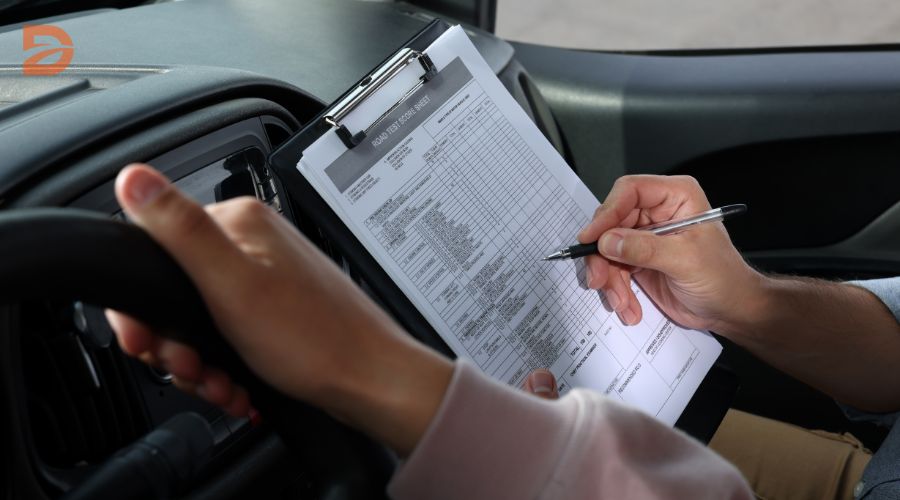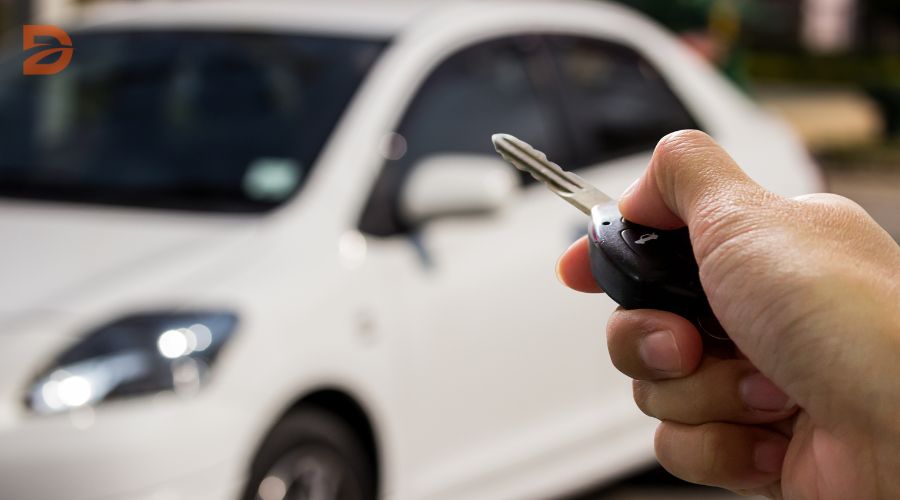Did you know that in 2020, over 44,000 people in Ohio had their vehicles inspected? That’s a staggering number that underscores the importance of thorough pre-purchase evaluations when it comes to buying a used car. This article will provide you with invaluable tips and insights to navigate the vehicle inspection process effectively, ensuring you make an informed decision that aligns with your needs and budget.
From comprehensive exterior checks to in-depth test drives, we’ll cover the essential elements to consider when evaluating a potential vehicle purchase. Cincinnati, located in Hamilton County, is even exempt from emissions inspections, so it’s crucial to be extra vigilant when inspecting cars in this area. Remember, Ohio drivers are not required to pass a safety inspection every year, making it all the more important to thoroughly assess the condition of any used car you’re considering.
Key Takeaways
- Understand the importance of conducting a comprehensive vehicle inspection before making a purchase.
- Learn about the different inspection guidelines and requirements in Ohio, including the exemption for Cincinnati drivers.
- Discover the essential steps to evaluate a vehicle’s exterior, interior, safety features, and documentation.
- Gain insights on how to effectively test drive a potential vehicle and identify any underlying issues.
- Explore the use of basic tools and diagnostic equipment to enhance your inspection process.
Comprehensive Vehicle Inspection Checklist
Conducting a thorough pre-purchase vehicle evaluation is crucial to ensure you make an informed decision and avoid potential issues down the road. One of the most critical steps in this process is the comprehensive vehicle inspection, which covers various aspects of the car’s condition both inside and out.
Exterior Inspection
Begin your inspection by carefully examining the vehicle’s exterior. Start with the lights, glass, mirrors, and tires. Check for any cracks, chips, or fogging in the headlights, taillights, and turn signals, as these can affect visibility and safety. Inspect the windshield and windows for any cracks or large chips that could compromise visibility. Ensure the mirrors are securely mounted and free of cloudiness or delamination. Lastly, visually inspect the tires for proper inflation and excessive or uneven tread wear, as these can indicate potential issues with the suspension or alignment.
| Exterior Inspection Checklist | Pass | Fail |
|---|---|---|
| Headlights, Taillights, and Turn Signals | ||
| Windshield and Windows | ||
| Mirrors | ||
| Tires |
By thoroughly inspecting the vehicle’s exterior, you can identify potential issues and ensure the car meets your pre-purchase vehicle evaluation and safety check requirements.
Vehicle inspection test drive
The test drive is a critical component of the vehicle inspection process, allowing you to assess the car’s performance and identify any potential issues. During the test drive, pay close attention to the vehicle’s handling, acceleration, braking, and overall responsiveness. Listen for any unusual noises, vibrations, or pulling, as these can indicate problems with the engine, transmission, or suspension.
Evaluate the steering and braking responsiveness, ensuring the vehicle tracks straight and the brakes feel firm and effective. Additionally, test the operation of the climate control, lights, and other interior features to confirm they are functioning correctly. This comprehensive automotive diagnostics and mechanical assessment process helps provide a thorough understanding of the vehicle’s drivetrain analysis and road performance evaluation.
By conducting a meticulous test drive, you can uncover potential problems that might not be visible during a visual inspection alone. This step in the vehicle inspection process is crucial for making an informed purchasing decision and ensuring the car you’re considering is in optimal condition.
“The test drive is the best way to get a feel for how a vehicle performs and handles in real-world driving conditions.”
Remember, a thorough vehicle inspection test drive can save you from unexpected headaches and costly repairs down the road. Take the time to thoroughly evaluate the car’s performance and functionality to make a confident and informed decision.
Interior and Safety Features
When it comes to a pre-purchase vehicle evaluation or a used car inspection, evaluating the interior and safety features of a vehicle is just as crucial as the exterior and mechanical inspection. The condition and functionality of the cabin, seats, seatbelts, and mirrors can significantly impact the overall safety and driving experience.
Start by thoroughly inspecting the interior of the vehicle. Check that the seats, seat belts, and mirrors are in good condition and properly adjusted. Ensure that all interior controls, such as the dashboard, steering wheel, and pedals, are functioning correctly. Verify that the lights, signals, and warning indicators are all working as they should.
- Examine the condition of the seats, looking for any signs of wear, tear, or damage.
- Test the seatbelt functionality, ensuring they lock and retract properly.
- Check the mirrors for proper alignment and clarity of vision.
- Inspect the operation of all interior lights, including the dash, cabin, and exterior lights.
- Ensure all the controls, such as the steering wheel, signals, and pedals, are in good working order.
Additionally, pay close attention to the safety features of the vehicle. Evaluate the airbag system, door locks, and child safety features to ensure they meet your needs and comply with safety check requirements. A thorough buyer’s vehicle appraisal can help you make an informed decision and identify any potential issues that may impact the overall used car inspection.
Documentation and Compliance
Alongside the physical inspection of the used car, it’s crucial to review the relevant documentation and ensure the vehicle is in compliance with all applicable regulations. One of the first steps should be to request a comprehensive vehicle history report, which can provide valuable insights into the car’s past, including any accidents, major repairs, or outstanding loans.
Driver’s Documents
As part of the used car inspection process, it’s essential to verify the driver’s documents to ensure they are valid and up-to-date. This includes checking the driver’s license, registration, and proof of insurance. Confirming these documents are in order can help avoid potential issues down the line and ensure the safety check and emissions testing are conducted properly.
- Driver’s license: Verify that the driver’s license is valid and has not expired.
- Registration: Ensure the vehicle’s registration is current and matches the information on the car.
- Proof of insurance: Confirm the vehicle has valid and up-to-date insurance coverage.
In addition to the driver’s documents, it’s important to review the vehicle’s compliance with federal and state regulations. This may include checking for any outstanding automotive diagnostics or buyer’s vehicle appraisal reports, as well as ensuring the car has passed the necessary safety check and emissions testing requirements.
“Regular vehicle inspections can help prevent accidents and extend the vehicle’s life, keeping compliance with safety standards.”
By thoroughly reviewing the documentation and ensuring the car is in compliance, you can gain a comprehensive understanding of the vehicle’s history and condition, allowing you to make an informed decision about its purchase.
Conclusion
Conducting a thorough vehicle inspection test drive is a critical step in the car-buying process, as it can help you avoid costly mistakes and ensure you make an informed decision. By following the comprehensive pre-purchase vehicle evaluation checklist and guidelines outlined in this article, you’ll be well-equipped to assess a potential vehicle’s condition, performance, and compliance.
Remember, a meticulous used car inspection can save you time, money, and the headache of dealing with unexpected issues down the road. Approach the automotive diagnostics and mechanical assessment process with diligence and attention to detail, and you’ll be on your way to finding the right car that meets your needs and budget.
The safety check and buyer’s vehicle appraisal conducted during the inspection process are crucial in ensuring you make a well-informed decision. With the information gathered, you can confidently evaluate the car’s suitability and make an informed choice, potentially saving you from costly repairs or unforeseen problems.
FAQ
What are the key elements to consider during a comprehensive vehicle inspection?
The key elements to consider during a comprehensive vehicle inspection include a thorough exterior check, a test drive to assess performance, an evaluation of the interior and safety features, and a review of the relevant documentation and compliance.
Why is the exterior inspection important when evaluating a used vehicle?
The exterior inspection is the foundation of a thorough vehicle evaluation. It involves carefully examining the vehicle’s lights, glass, mirrors, and tires for any signs of damage, cracks, or excessive wear that could impact safety and performance.
How can the test drive help identify potential issues with the vehicle?
The test drive allows you to assess the vehicle’s handling, acceleration, braking, and overall responsiveness. It helps identify any unusual noises, vibrations, or pulling, which can indicate problems with the engine, transmission, or suspension.
What should I look for when inspecting the interior and safety features of a vehicle?
When inspecting the interior and safety features, you should ensure the seats, seat belts, and mirrors are in good condition and properly adjusted. Check the operation of all interior controls, such as the dashboard, steering wheel, and pedals, and verify that the lights, signals, and warning indicators are all working correctly.
Why is reviewing the vehicle’s documentation and compliance important?
Reviewing the vehicle’s documentation, such as a full history report, can provide valuable insights into the car’s past, including any accidents, major repairs, or outstanding loans. This information is crucial in ensuring the vehicle is in compliance with all applicable regulations and in making an informed purchasing decision.










